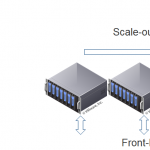Reading Time: < 1 minuteA best practice is a method or technique that has consistently shown results superior to those achieved with other means, and that is used as a benchmark. In addition, a “best” practice can evolve to become better as improvements are discovered.
But, as well described by Frank Denneman in his post, best practices are never absolute, they depends on your specific case.
One good example is in the storage part of a virtualization solution: VMware guides (but also other virtualization vendor) define some good practices, but storage vendors may define other more specific. In this case, usually, you must follow the practices of your storage vendor.
And note that most of them could be different from each other: to make a simple example, in iSCSI solutions, some vendor require a single iSCSI network, other more networks (like a switched fabric solution in FC world).
For a list of most storage vendor best practices (updated to vSphere 5) see this good post: Storage Best Practices from different vendors on VMware vSphere.
Related Posts
Storage Best Practices: Vendor vs. VMwareUna best practice è un metodo o tecnica che permette di ottenere i risultati migliori (a seconda del parametro di valutazione). Ovviamente una buona best practice deve essere adattativa ed evolversi al variare delle condizioni al contorno (ad esempio al variare della tecnologia). Ma, come…
-
Storage Controllers in VMware vSphereThe last week I’ve realized a new article for the StarWind blog focused on the different types of storage controllers in VMware vSphere (see Storage Controllers in VMware vSphere). To access block-based devices (like virtual disks, CD/DVD-ROM), but also generic SCSI devices, a virtual machine…
-
Frame vs. frame-less storageOne old (and now quite not used anymore) storage concept was about the Frame vs. frame-less architectures. Those terms are from the past decades and where used (especially from Dell-EqualLogic) to identify how storage controllers are dedigned and how they can scale: Frame-based storage contain…
Virtualization, Cloud and Storage Architect. Tech Field delegate.
VMUG IT Co-Founder and board member. VMware VMTN Moderator and vExpert 2010-24. Dell TechCenter Rockstar 2014-15. Microsoft MVP 2014-16. Veeam Vanguard 2015-23. Nutanix NTC 2014-20.
Several certifications including: VCDX-DCV, VCP-DCV/DT/Cloud, VCAP-DCA/DCD/CIA/CID/DTA/DTD, MCSA, MCSE, MCITP, CCA, NPP.











